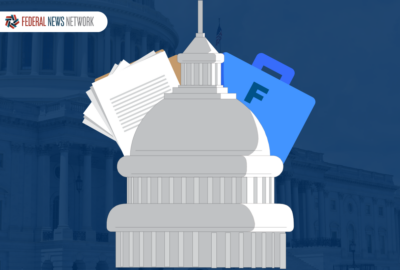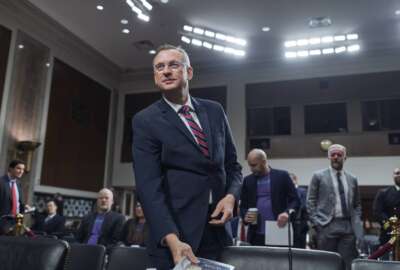Health and Human Services updates regulations for research misconduct
"Integrity could be lacking in how research is performed. The definition of research misconduct is fabrication falsification or plagiarism," said Sheila Garrity...
Health and Human Services recently updated regulations for an activity on which it spends billions each year: Scientific research. The regulations deal with research integrity. They’ve undergone their first overhaul in 20 years. The Federal Drive with Tom Temin got details now from the director of the HHS office of research integrity, Sheila Garrity.
Interview transcript:
Tom Temin Let’s start with just a brief overview of the Office of Research Integrity. What agencies does it cover and what does it generally do in the first place?
Sheila Garrity The Office of Research Integrity is part of HHS, Tom, and we’re part of the Office of Assistant Secretary of Health (OASH). So our responsibilities include oversight of research funded by the Public Health Service. And so if there are questions involving that research, research integrity issues, we review those questions. We also provide funding and training in the responsible conduct of research. The agencies in the PHC include NIH, CDC, National Cancer Institute, typically, anything you can think of is within.
Tom Temin So the big money grant agencies? Not just headquarters. And these regulations, I mean, what are the issues in research integrity that they cover in the first place?
Sheila Garrity So research integrity, what people think of when they hear research integrity is research misconduct. You probably see journals such as Retraction Watch that cover cases of research misconduct. And when those allegations involve federal funds, PHS funds, the institution has to look into those. And then when the investigation is done, we do regulatory oversight. So people hear the bad things. But PHS funding also does a lot of good things. Lifesaving treatments happen because of public health service funding.
Tom Temin And these rules on research integrity. What are some of the areas where integrity could be lacking?
Sheila Garrity Integrity could be lacking in how research is performed. So the definition of research misconduct is fabrication, falsification or plagiarism. And they’re proposing performing, reporting or reviewing of research or research results. So in a research grant, there could be research misconduct in figures, in a publication, there could be some fabrication or falsification. All that falls into those buckets of research misconduct and integrity.
Tom Temin And what about, say, failures of omission? Like, for example, you hear sometimes, well, this or that industry was behind this piece of research, and that may not have biased it, but it should have been disclosed.
Sheila Garrity So those issues are not within. Those are research integrity issues, but they don’t fall under our regulation. Your listeners will be aware of scientific integrity, scientific integrity policy, which applies to government employees. And there’s a lot of disclosure issues covered there. We are all required as government employees to once a year disclose all of our outside interests. And if you are publishing your research, remember, federal employees do a lot of federally funded research themselves. You need to say, Okay, I was funded by this grant or I helped here I was on this board. All of that just needs to be disclosed.
Tom Temin Okay, so getting back to misconduct, the rules then cover those things you mentioned. Fabrication, falsification, plagiarism. What was it that was out of date, versus 2005.
Sheila Garrity 2005, which is when I came into this field when that regulation came out. We’ve gained a lot of experience and research has changed since 2005. Look around you and how your studio has changed. You told me you’ve been in this business for 40 years. I’m sure it didn’t used to look like this. It was entirely different. Research, the technologies to conduct research has changed. Research also has no borders in the collaborative research that’s done between institutions in different states, in different countries. That was not addressed in the former policies. So we went to work to craft a policy that would be timeless, that would last for the next 20 years, and with enough flexibilities to allow us to grow as research grows.
Tom Temin We are speaking with Sheila Garrity. She’s director of the Office of Research Integrity at Health and Human Services. And that technology idea, I imagine, one of the things on the drafters minds of these regulations had to have been artificial intelligence, which has potential to really enhance research and also to really bungle it pretty badly.
Sheila Garrity Artificial intelligence is on everyone’s minds, and we can’t run away from it. We can’t ignore it, it’s here. And as you said, it can have a lot of good uses, but it has a lot of bad uses. Artificial intelligence is not mentioned in the regulation, but it suffice to say how research methods have changed so that we have made room to grow as we get a better handle on a high.
Tom Temin Now, reading some of the changes that you’ve highlighted, they look kind of administrative and picky, picky, clarifying institutional confidentiality obligations, providing clearer descriptions of research, misconduct, investigation requirements. That sounds a little meta in terms of the research itself. So maybe tell us.
Sheila Garrity Picky, picky leads to a lot of lawsuits, Tom. So we had to be careful. And I came from the academic world, so I was a research integrity officer for almost 30 years at two different institutions, one being Johns Hopkins, which is the number one recipient of federal funds in this country. And then I was at George Washington for nine years. So institutions have to follow a very prescribed process in how they address these allegations, and that is for their protection and for the protection of people accused of research misconduct and the people that bring the accusations forward. So in order to protect the process, we made some clarifications, change definitions to help the institutions and to help us. There’s a fine balance between overstepping either on the institutional side or our side. Confidentiality is a concern. Say you’re accused of misconduct, we don’t want to automatically assume that you committed misconduct until a process has gone through. So institutions keep those matters confidential. And you see lots of that in the press. We can’t comment on ongoing matters. So we made sure to address that.
Tom Temin And these rules were they considered major in terms of federal rulemaking requirements. If it has a certain cost level, it becomes what they call a big rule or a major rule, and therefore had to go through the White House, the [Office of Information and Regulatory Affairs (OIRA)]. Was that the case for these rules?
Sheila Garrity It did go through OIRA, not because of the cost, but because when the NPRM was issued, and OIRA leadership said to OMB, these changes are not going to receive a lot of comments. People are going to love them, so don’t worry. So it was allowed to waive review from OMB? Well, then when the [Notice of Proposed Rulemaking (NPRM)]came back with nearly 300 comments, many of them quite opposed to what was in the NPRM. OIRA said, Hey, now we got to look at this. You got a lot of comments. So they did.
Tom Temin We should clarify for the audience, Office of Information and Regulatory Affairs, even a lot of feds don’t know about that little office in OMB.
Sheila Garrity Created by Ronald Reagan.
Tom Temin Indeed. Yes. Because well, rulemaking, that’s always a subject of political discussion, let’s say. And the comments, do they mostly come from academic recipients of research grants?
Sheila Garrity They did mostly come from academic recipients of research grants. Some respondents attorneys also weighed in, and they were concerned that the rule was overly prescriptive in terms of the process, that you had this many days to complete an assessment.
Tom Temin They saw what I saw in it.
Sheila Garrity Yes. And so they wanted a little more discretion, and we gave them that. And for the federal employees listening, I’m a new fed. I’ve only been here a year and a half. The number of people that it takes, the number of different offices to get a regulation across the finish line is incredible. And I think the outside world thinks the feds are always passionate each other. People were incredibly helpful. Here’s what we need, Sheila. Here’s how we need to get it through OIRA, do this, do that. And I am really grateful for all the teamwork that I had.
Tom Temin And I imagine some of the institutions that do the research under grant. If you get a big land grant university or one of the big academic private institutions, they probably often have maybe dozens of projects going on throughout their campuses and their facilities, all working separately, all funded federally. It’s kind of a side business for a lot of schools as federal funding. My own alma mater gets tens of millions a year in federal funding. It might be good for them to understand this so that there’s some kind of overlying governance for this very scattered activity.
Sheila Garrity So once the final rule came out, the regulated institutions were relieved. And they appreciated the changes that came after they commented on the NPRM. This is rulemaking at its finest. People commented as requested, we review those comments as required in the preamble. We talked about each and every comment we received and how we responded. So I think the end product is a good balance.
Tom Temin And you are now kind of burnished a bit by the sun in having gotten a big major federal regulation done, having been a fed only a year and a half.
Sheila Garrity Yes, I’m thrilled.
Tom Temin And is there something on your wall to signify that?
Sheila Garrity No, because there’s still hard work ahead of us. Now we need to issue guidance. We need to help our regulated communities understand and go out and listen to them. I think this has opened the door to some new forms of communication. And I appreciate that, and we’re going to capitalize on that.
Tom Temin I can hear the printer running off a thousand pages of draft guidance.
Sheila Garrity Nobody prints anymore. No printing, we’re trying to be paper free.
Copyright © 2025 Federal News Network. All rights reserved. This website is not intended for users located within the European Economic Area.
Tom Temin is host of the Federal Drive and has been providing insight on federal technology and management issues for more than 30 years.
Follow @tteminWFED






